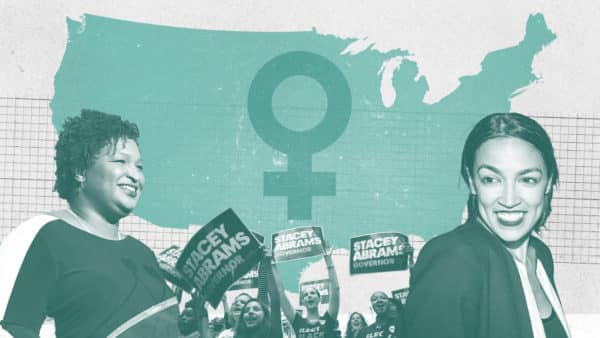Gender inequality worldwide takes a staggering toll by perpetuating poverty, rapid population growth and violence against women and by erecting barriers to reproductive and other health care for women, the the United Nations Population Fund said in its annual assessment of the State of the World’s Population.
“The message of this report is simple,” said Dr. Nafis Sadik, executive director of the population fund, “the price of inequality is just too high.”
The State of the World’s Population 2000 paints the big picture and presents positive models as well as the vast areas where gender inequality must be reduced. The report calls ending gender discrimination an urgent human rights and development priority throughout the world.
The report, “Lives Together, Worlds Apart: Men and Women in a Time of Change,” measures the pathologies of gender bias in five key areas: health and reproductive rights, violence against women and girls, men and reproductive rights, economic costs and denial of human rights for women. Sadik and other experts briefed reporters in a national telephone conference.
Supported by research that marks important health, education, economic and legal trends, the annual report measures progress in relation to goals embodied within the world conference consensus on human rights, population and development, as well as the women’s issues agreed to in the Fourth World Conference on Women in Beijing and its follow-up at this year’s special session called Beijing Plus 5.
Sadik said the intention of this year’s population report is to help focus the dialogue on what she assesses as major opportunities to reshape social relationships that cause bias.
Reproductive health and population programs under-funded
However, in one crucial area, funding is inadequate. Nations have agreed that $5.7 billion a year is needed from international sources for reproductive health and population programs, but they have only made about $2.1 billion available.
Sadik added that the pace of change in the global economy and available communication technology means that women and their families worldwide are suddenly gaining access to information about the gains in women’s rights elsewhere. Almost inevitably, with the introduction of communication technology, comes a push for change in gender roles and family relationships, usually followed by internal strife as well as the founding of a grassroots organization for women’s rights. Governments are then confronted with the need to meet that demand–and to change existing institutions and to build everything from health clinics to classrooms.
However, she added, there have been areas of significant progress against violence and to ensure human rights. She cited laws passed prohibiting female genital mutilation by 16 of 28 countries where it is practiced. She also noted that in recent years every country in Latin America has improved women’s legal standing.
However, the U.S. representative to the population fund emphasized the need for girls and women to receive education. Dr. Henry Foster, chair of the U.S. Committee for the United Nations Population Fund and senior adviser to President Clinton, said that education of women and girls must be among everyone’s top priorities.
“We must educate women and girls. Literacy comes first, then education,” he said. “Then, women must gain political strength,” he said. “They have to become their own advocates.”
Foster, an obstetrician and gynecologist, also took aim at the lack of funding for maternal health and safe motherhood.
“The inordinately high and totally unacceptable maternal mortality rate” leaves almost 600,000 new mothers dead each year, he noted. If the U.S. maternal mortality rate were universal, the number of maternal deaths worldwide would drop to 6,000 a year, he said.
U.S. plays major role in worldwide maternal health
The barriers to maternal health are cultural and financial, not only in the developing world and in other traditional societies, but in the United States.
A case in point is the global gag rule on abortion imposed by the U.S. Congress on international non-governmental agencies working in reproductive health overseas. And Congress, now in the final stages of appropriating funds for fiscal year 2001, is considering at most $425 million for international family planning. The amount represents a large rollback from the total in 1995 of $550 million.
“November is crucial,” Foster said of the impact of the federal election on issues of women’s health care and international family planning assistance.
Highlights of the report:
Gender and health
Inequality harms women’s health. Unequal power relations between women and men limit women’s control over sexual activity, their ability to prevent unwanted pregnancies and to protect themselves against AIDS and other sexually transmitted diseases. Teen-age girls are especially vulnerable.
Inadequate reproductive health care results in high rates of unwanted pregnancy, unsafe abortion and preventable death and injury in childbirth.
Gender-based violence is a health care issue and a barrier to full participation in society.
Each year, women undergo an estimated 50 million abortions, 20 million of which are unsafe. About 78,000 women die of these unsafe abortions, about a fourth of the casualties are teen-agers.
At the end of 1999, 34.3 million people were living with AIDS or HIV. Of the 5.4 million new infections last year, 4 million occurred in sub-Saharan Africa. In Africa, HIV-positive women outnumber HIV-positive men by 2 million.
Female genital mutilation affects more than 100 million women and girls.
Men also face reproductive health care problems, including sexually transmitted diseases, infertility and impotence. Many men say they want to limit or space their children, but neither they nor their wives have contraception.
Violence against women and girls: a human rights and health priority
At least one in three women has been beaten, coerced into sex or abused in some other way–most often by someone she knows.
At least 60 million girls are “missing” as a result of sex-selective abortion, infanticide or neglect. Most were Asians.
Two million girls are brought into the commercial sex market each year.
As many as 5,000 women are victims of “honor” killings by members of their own families.
Justification for violence against women stems from distorted views of sex roles and the responsibilities of men and women in relationships.
Men, reproductive rights and gender equality
Discrimination against women and girls will not stop without the support and understanding of men, particularly in the family.
Men’s attitudes and actions are strongly influenced by stereotypes of masculinity that set men up for failure, stress and difficulty in relationships.
Helping men and women communicate about their own family roles and responsibilities can help families, improve reproductive health and reduce inequality and violence.
Counting the cost of gender inequality
Women’s second-class status carries high financial and social cost. Both men and women pay a price. For this reason, empowering women is a central aim of sustainable development.
Women’s economic activity is undercounted because it often takes place in the informal sector. Better accounting for such work could result in improvements in investment and in productivity.
Elder care, in which women are often both the caregiver and the recipient, is an increasing challenge. Women are living longer but frequently they have less support from formal pension systems than men because they did not participate in the formal labor force.
Maternal death increases the mortality risks for her children and removes her contribution to the family, in both paid and unpaid work.
Gender violence means direct costs to the health care systems, employers, law enforcement budgets and legal systems. The World Bank estimates that in industrial countries sexual assault and violence steal almost one in five healthy years of life for women ages 15 to 44.
Click here for statistics on gender violence worldwide.
The gender disparity in education, narrowing in most of the world, remains high in South Asia and sub-Saharan Africa, where less than 40 percent of high school students are female.
Women’s rights are human rights
Human rights treaties, starting with the U.N. Charter and Universal Declaration of Human Rights, form a legal foundation for ending rights violations and gender discrimination. They instruct governments to take action against such abuses.
Other important human rights documents are the 1979 Convention on the Elimination of All Forms of Discrimination Against Women, augmented in 1999 with an Optional Open Protocol to enable individuals and groups of women to submit complaints to a monitoring body.
The Vienna Declaration, the programs of action from the International Conference on Population and Development and the World Conference on Women also emphasize gender equality and empowerment of females.
Although they do not supersede national law, these accords often provide women leverage when lobbying their governments to ensure women’s human rights.
Glenda Crank Holste is a Twin Cities journalist who has covered social and economic issues for 10 years.
For more information, visit:
United Nations Population Fund:
http://www.unfpa.org/
The UN site for AIDS/HIV programs and action:
http://www.unaids.org/
Information on the World Bank’s work on gender equality since the Beijing conference:
http://www.worldbank.org/gender/


